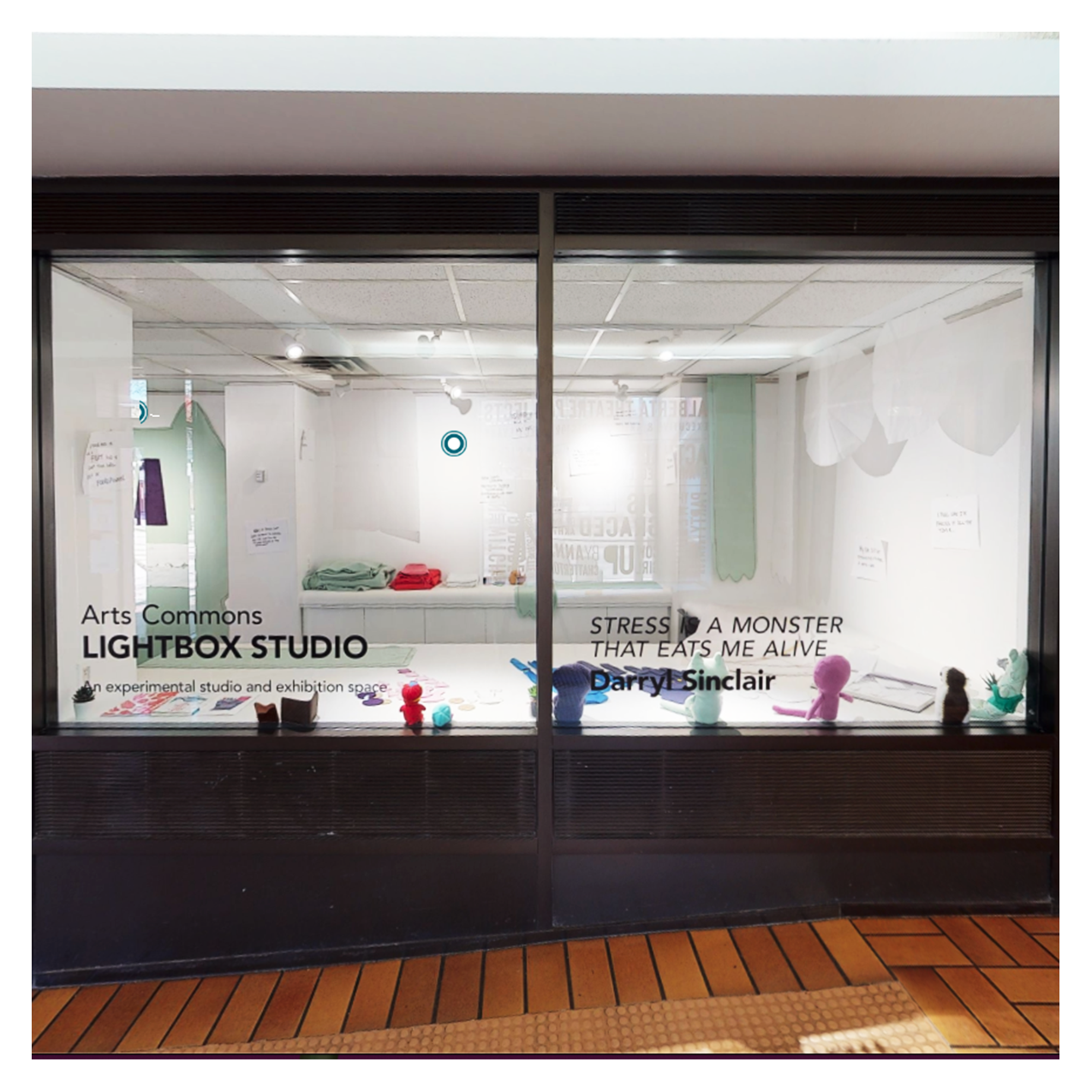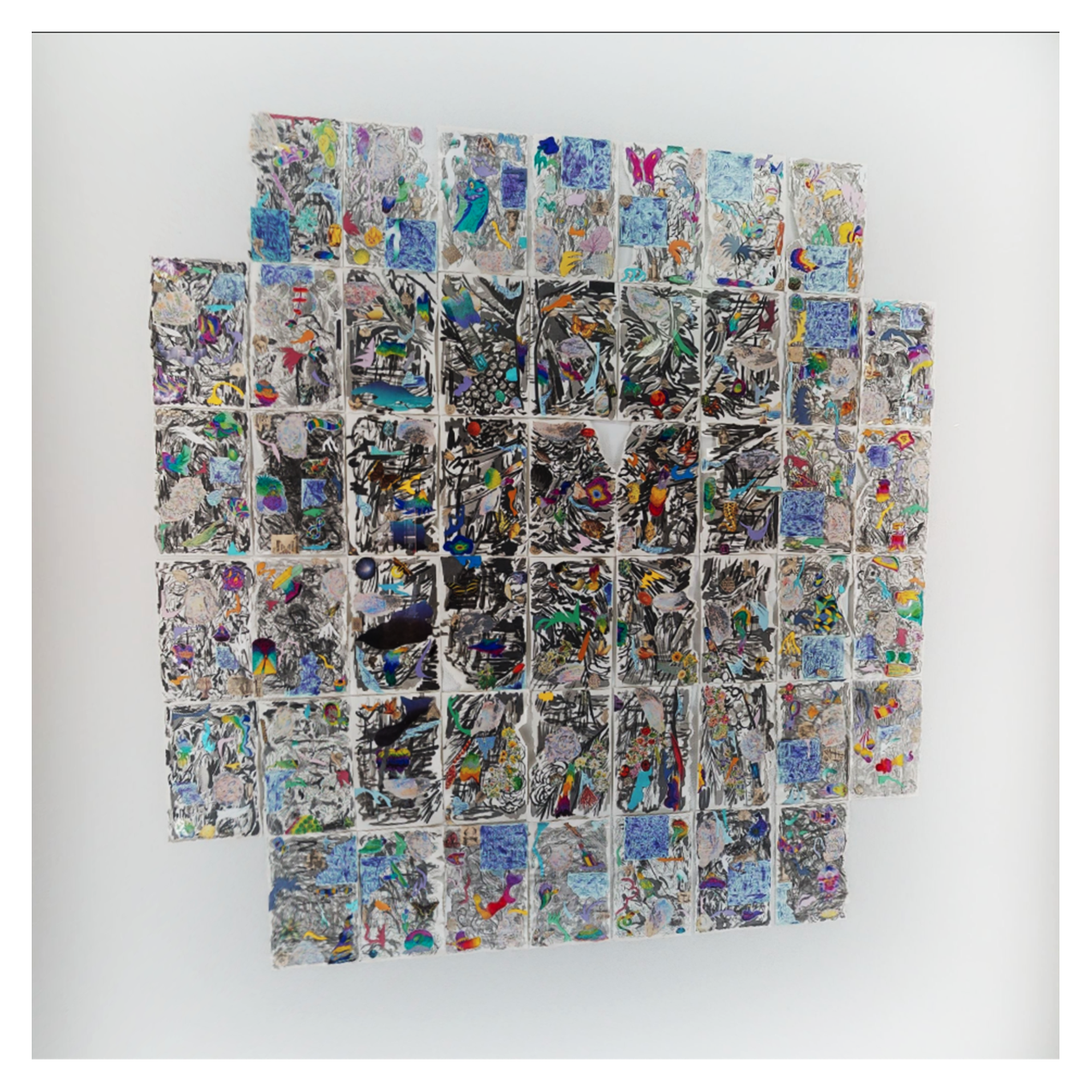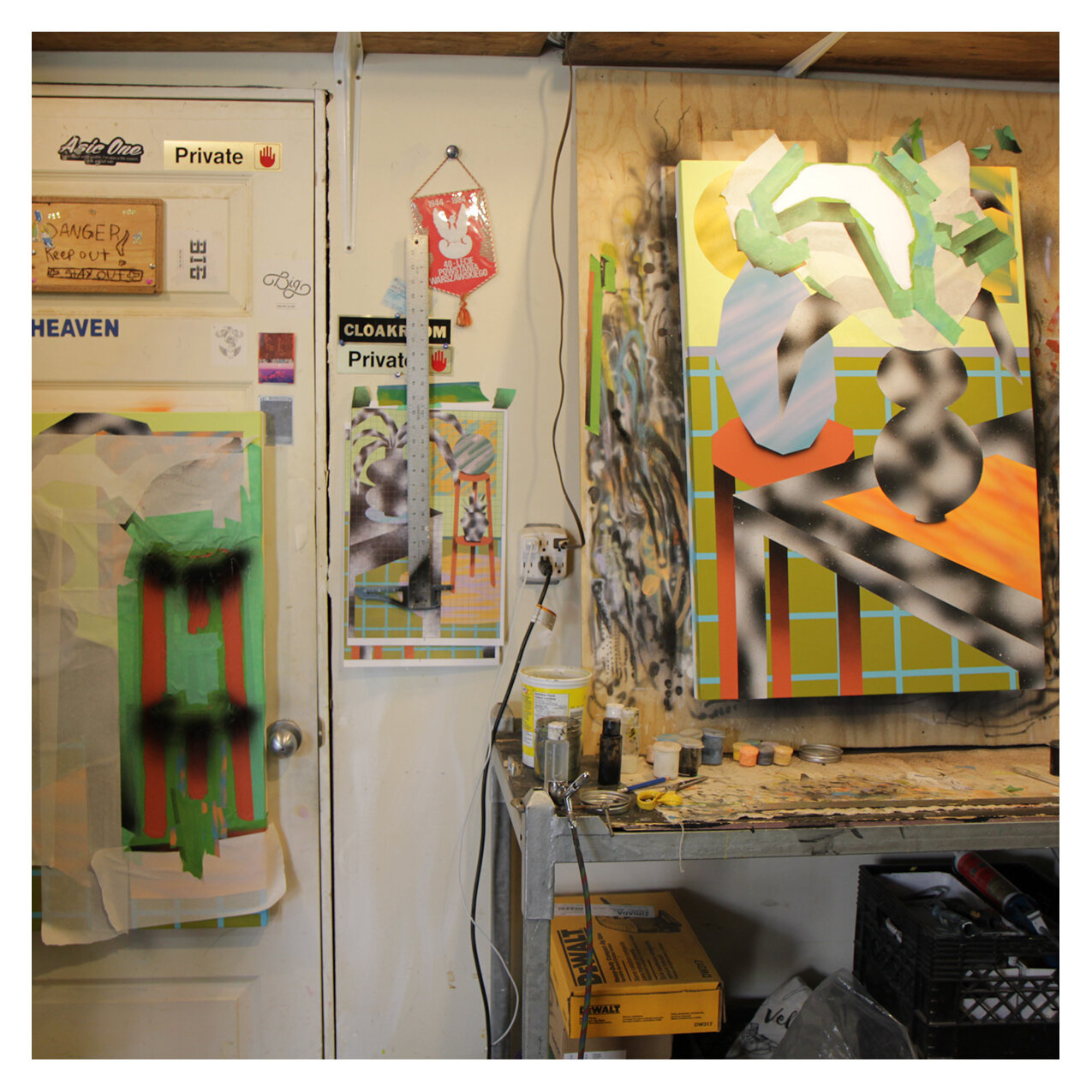Art and 3D Technology: A Beautiful Pairing for RBC Emerging Visual Artists
In May of 2021, Arts Commons’ Window Galleries, Lightbox Studio, Ledge Gallery, +15 Galleries and +15 Soundscapes were translated into digital 3D with the help of Zoon Media and Matterport, enabling the public to gain access to spaces that had been shut since the onset of the pandemic. Works such as Christopher Savage’s Where the Forest is Thickest (& Portrait after Four Seasons) can now be seen and appreciated the way he intended, despite restrictions closing most communal environments.
“Knowing originally that I was installing in one of the window spaces, I wanted to make something that would hopefully get people’s attention and make them slow down,” explains Savage. “Hopefully they’d take some time to engage and trace their own way through the dense network of imagery.”
Such intention prior to the 3D scans would’ve been lost to most—subsequently, the high-tech addition to the Arts Commons galleries has proved exciting to viewers and artists alike. It goes to show that communities are learning to navigate new ways of viewing art, with creatives adapting right alongside them.
At the virtual Artists Reception held on June 19, 2021, many in the RBC Emerging Visual Artists Program spoke with Visual & Media Arts Associate Sanja Lukac on their work and how the pandemic has affected their processes. Lightbox Studio artist Darryl Sinclair’s project Stress Is A Monster That Eats Me Alive, which came to its all-consuming conclusion during the live event, translated the many anxieties brought about by the pandemic into a satisfying combination of performance and reflection. Before being consumed by their 7-foot-tall stress creature, Darryl hand-fed it sheets of paper filled with anxieties the public had submitted to them—words like ‘money’, ‘COVID’, and ‘anti-maskers’ drifted into view before being disappearing within the fleecy creation. They then shimmied their way into the belly of the beast.
“I hope that this process was helpful for some of these people—to be able to externalize and get rid of some of their anxiety and put it somewhere else,” says Darryl. “Hopefully it’s a little bit cathartic to watch it being eaten up by a monster.”
Other artists utilized audio or film to accompany their work, helping to translate it effectively into the digital sphere. Nabila Walji’s photographs in UnBelonging in my Fatherland are joined by her own narration and guide the viewer in understanding where her intentions behind the series grew from.
“The internal and philosophical challenges of encountering or reflecting on identity, belonging, race, colonialism, and trying to make sense of those,” says Nabila, contemplating the challenges she had to overcome in the development of her work. “In East Africa the context is just so different than the context in Canada, so it was making sense of a new world as well and the race dynamics there and the different histories, and then trying to understand my place in it and actually engage with these things.”
Not all artists were able to adapt as easily. In fact, some were unable to show their work inside Arts Commons entirely: Rachel Ziriada and Mikhail Miller of NASARIMBA, originally housed in the Ledge Gallery, ended up migrating to a home studio due to restrictions. But it was in this new environment that they were able to find time for new projects and continue to create the murals they’re so well known for.
“I think presenting abstract forms and colours and compositions—kind of like visual poetry in the public space… we really want people to connect with where they live and maybe think about our collective environment in a different way,” remarks Mikhail. “We’re surrounded by a lot of advertising and difficult things going on around us, but life is so much more than that. We’re trying to connect with that part of life.”
Rachel adds, “The work in public is accessible to everyone—we really value that, and the fact that everyone that sees the artwork brings their own story to it. That’s what gives it meaning.”
You can still virtually tour the work of these artists and others by visiting www.artscommons.ca/3D, and watch the full RBC Emerging Visual Artists Reception on YouTube: https://www.youtube.com/watch?v=-mbXLtWPpQE.












